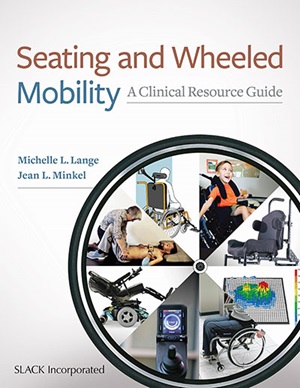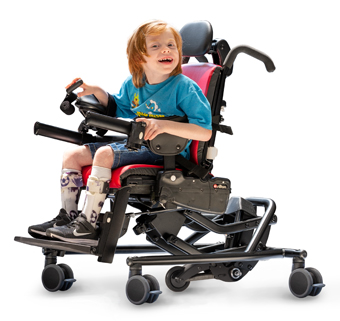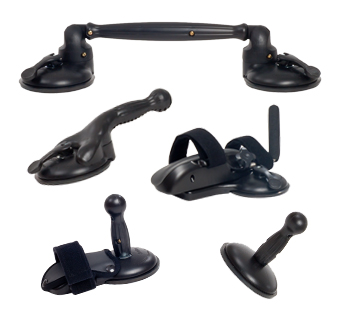Seating and Wheeled Mobility: A Clinical Resource Guide
Book Review
| July 2018 If you are involved with wheelchair evaluations and recommendations for your clients – whether experienced or new on the block – this comprehensive and readable book is for you. Michelle Lange and Jean Minkel are well-known clinicians in the seating and wheeled mobility world. They gathered respected contributors with wide-ranging expertise for this well-rounded, thoroughly referenced volume. The book is divided into sections making it easy to find specific topics, therefore practical for experienced readers seeking specialized information. But it is ideal for clinicians new to seating and wheeled mobility, who would benefit from reading the chapters in order.
If you are involved with wheelchair evaluations and recommendations for your clients – whether experienced or new on the block – this comprehensive and readable book is for you. Michelle Lange and Jean Minkel are well-known clinicians in the seating and wheeled mobility world. They gathered respected contributors with wide-ranging expertise for this well-rounded, thoroughly referenced volume. The book is divided into sections making it easy to find specific topics, therefore practical for experienced readers seeking specialized information. But it is ideal for clinicians new to seating and wheeled mobility, who would benefit from reading the chapters in order.
Section I addresses seating, laying a foundation of information on postural support and pressure management. I like the practical readability of the client assessment chapter, followed by a chapter on pressure management describing etiology and assessment of pressure injuries before moving on to discuss a full range of possible seating interventions.
Section II builds on this groundwork, discussing postural support and pressure management clinical applications applied to hands-free, hands-dependent and prop sitters. Each chapter addresses client characteristics, assessment, and appropriate seating options. A standardized measures and terminology chapter provides the most current information and why using it is important. Finally, basic concepts of 24-hour posture management are addressed well. (Photos on page 128 are mislabeled which could prove confusing; look carefully to match the labels with the appropriate photos.)
Section III discusses wheeled mobility bases; the authors use an algorithm to clarify the clinical thought process for analyzing evaluation results to select an appropriate mobility base.
Section IV focuses on clinical applications. Two chapters cover manual mobility for self-propelling and dependent users. Four address power mobility comprehensively, from basic to technical access methods, configuration and programming, and effectively interfacing mobility, communication and position change technologies. Another chapter discusses “bridging the gap” between manual and power mobility with alternative drive mechanisms. Section IV details seating and mobility assessment documentation requirements.
Section V – Specialty Applications delves into specific populations – a rich resource for anyone. Chapters on pediatrics, geriatrics, bariatrics, degenerative neurological conditions and complex neurological and orthopedic presentations offer insights for clinicians of any experience level. Valuable specifics are here for practitioners beginning work with unfamiliar populations. Included is important mention of adaptive positioning equipment beyond wheelchairs for various conditions.
Section VI – Additional Considerations addresses topics often not recognized for their significance in fostering successful wheeled mobility outcomes, including aging with a disability, environmental assessment/modification, community transportation and testing standards for wheelchairs.
I would have welcomed this comprehensive resource more than 30 years ago when I began working in this area. It is here just in time to help professionals serve the burgeoning population of people, often with limited funding, who require high quality wheelchair services. Seating and Wheeled Mobility: A Clinical Resource Guide gathers the wisdom of many and makes a great contribution to the support of quality wheeled mobility services.
You can order the book online here.




